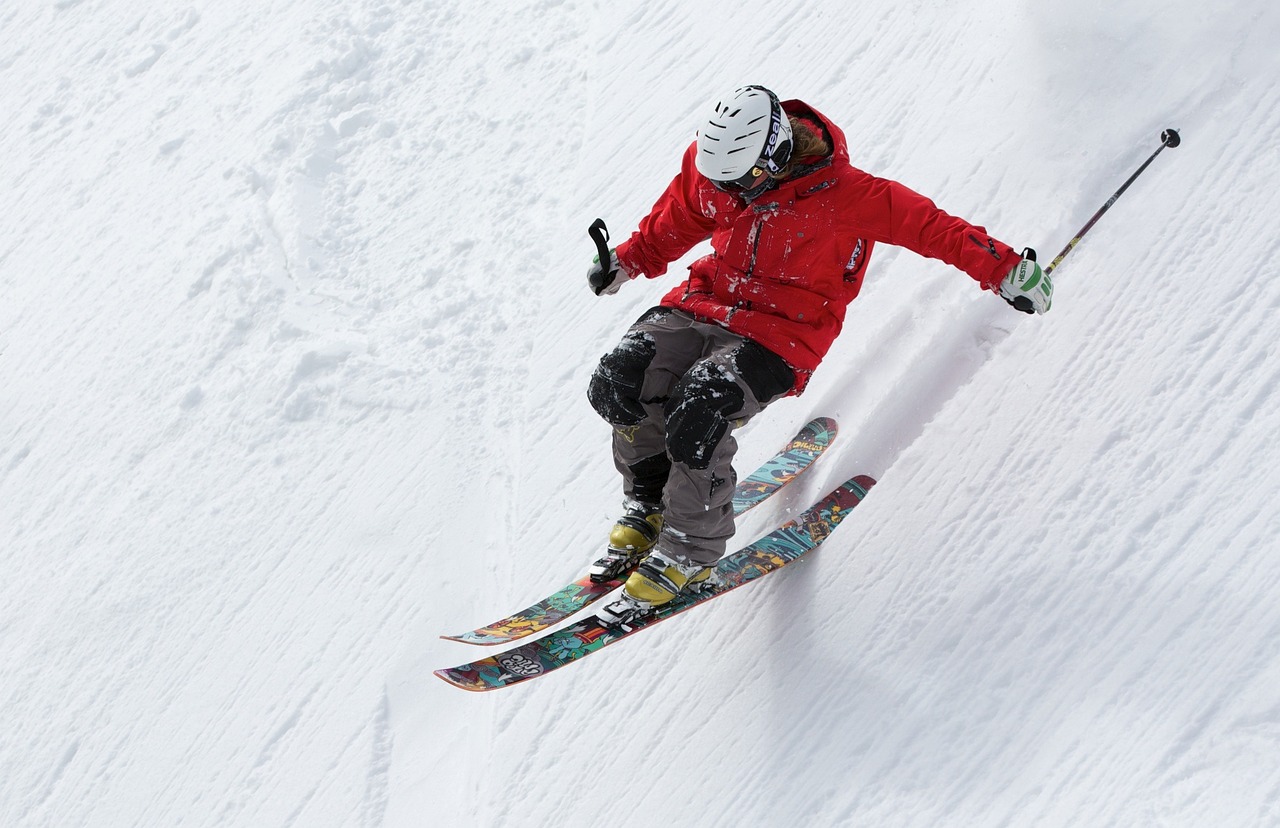Selecting the right ski length is a crucial decision for skiers of all levels. Whether you’re a beginner hitting the slopes for the first time or an experienced skier looking to upgrade your gear, the length of your skis plays a significant role in your overall skiing experience.
The appropriate length for skis depends on various factors, including your skiing ability, weight, height, skiing style, and the specific conditions you’ll encounter. As a general guideline, beginners often benefit from shorter skis for stability and control, while advanced skiers might prefer longer skis for speed and maneuverability.
In this comprehensive guide, I’ll explore the factors that influence the choice of ski length, providing you with the knowledge and tools needed to make an informed decision. Let’s get started!
Understanding Ski Length
Ski length is measured in centimeters (cm) and is a fundamental aspect of ski design. The right ski length is determined by a combination of factors, including your skiing ability, weight, height, the type of skiing you plan to do, and personal preferences. Ski manufacturers provide recommended ski length ranges for specific skill levels and skiing styles, but it’s essential to understand the principles behind these recommendations to make the best choice for your needs.
Factors Influencing Ski Length
- Skiing Ability:
- Beginner: Novice skiers are often advised to choose shorter skis, as they provide more stability and are easier to control. Shorter skis are ideal for learning basic techniques and building confidence on the slopes.
- Intermediate: Intermediate skiers can benefit from skis with a moderate length, allowing them to progress and explore different terrain types.
- Advanced/Expert: Advanced and expert skiers tend to prefer longer skis for enhanced speed and maneuverability. Longer skis also provide better stability at high speeds.
- Weight and Height:
- Your weight and height play a crucial role in determining the appropriate ski length. Heavier skiers may require longer skis to distribute their weight effectively, while lighter skiers might find shorter skis more manageable.
- Skiing Style:
- Skiing style also affects ski length choice. For example, if you enjoy carving turns on groomed runs, shorter skis might be more suitable. If you’re into off-piste skiing and powder, longer skis with better floatation are recommended.
- Personal Preferences:
- Ultimately, personal preferences matter. Some skiers may prefer shorter skis for their agility, while others may lean towards longer skis for added stability and speed. It’s essential to find a balance that suits your skiing style and comfort.
Ski Length Chart
Here is a general ski length chart to provide you with a starting point for selecting the appropriate ski length based on your height, weight, and ability level:
| Skier Level | Height (inches) | Height (cm) | Weight (lbs) | Weight (kg) | Recommended Ski Length (cm) |
| Beginner | Below 5’4″ | Below 163 | Below 140 | Below 64 | 140-159 |
| 5’4″ – 5’8″ | 163-173 | 140-190 | 64-86 | 150-169 | |
| Above 5’8″ | Above 173 | Above 190 | Above 86 | 160-179 | |
| Intermediate | Below 5’4″ | Below 163 | Below 140 | Below 64 | 146-160 |
| 5’4″ – 5’8″ | 163-173 | 140-190 | 64-86 | 157-175 | |
| Above 5’8″ | Above 173 | Above 190 | Above 86 | 168-185 | |
| Advanced | Below 5’4″ | Below 163 | Below 140 | Below 64 | 152-162 |
| 5’4″ – 5’8″ | 163-173 | 140-190 | 64-86 | 163-175 | |
| Above 5’8″ | Above 173 | Above 190 | Above 86 | 174-186 |
Please note that this chart provides general recommendations, but individual preferences and skiing conditions can vary. It’s advisable to consult with a knowledgeable ski shop or instructor for personalized guidance.
Choosing Ski Length for Different Skiing Styles
- Alpine Skiing:
- For groomed slopes and carving, consider a ski length that falls within the recommended range for your ability level.
- Shorter skis (closer to the lower end of the range) provide quicker turns and easier maneuverability for beginners and intermediates.
- Longer skis (closer to the upper end of the range) offer more stability at higher speeds and better performance on challenging terrain for advanced skiers.
- Powder Skiing:
- Powder skis tend to be longer and wider to provide better floatation on soft snow. For deep powder, choose a ski that is at or above your recommended length based on your ability level.
- Freestyle Skiing:
- Freestyle skiers often prefer shorter skis for increased agility and ease of performing tricks and jumps.
- Backcountry Skiing:
- The choice of ski length for backcountry skiing depends on the type of terrain you’ll encounter. Longer skis offer better stability in open, steep terrain, while shorter skis are more maneuverable in tight spots.
Testing and Adjusting Ski Length
Once you’ve determined the recommended ski length range for your ability level, it’s essential to test different skis within that range to find the perfect fit. Ski shops often have demo skis available for trial runs. Here’s how to test and adjust ski length:
- Try Different Lengths:
- Experiment with skis at different lengths within your recommended range.
- Pay attention to how each length feels while skiing, including stability, control, and ease of turning.
- Consider Terrain:
- Think about the types of terrain you plan to ski on regularly. Choose a length that suits your preferred skiing environment.
- Consult a Ski Professional:
- Seek advice from experienced ski instructors or technicians at the ski shop. They can provide valuable insights and recommendations based on your specific needs.
Ski Length and Age
Age can also be a factor in determining ski length, especially for young skiers who are still growing. When choosing skis for children and teenagers, it’s essential to consider the following:
- Youth and Junior Skis:
- Manufacturers produce skis specifically designed for children and juniors.
- These skis are shorter and lighter, making them more manageable for young skiers.
- The correct ski length for youth and junior skiers should align with their height, weight, and ability level, just like with adult skis.
- Growth Considerations:
- If you’re buying skis for a growing child or teenager, you may want to choose skis that provide room for growth.
- It’s better to err on the slightly longer side and have the skier grow into the skis rather than outgrow them too quickly.
- Consultation with Experts:
- When in doubt, consult with experts at a ski shop or seek advice from ski instructors who specialize in teaching young skiers.
Ski Length and Ski Bindings
The ski length you choose should also be compatible with your ski bindings. Ski bindings need to be adjusted to accommodate the specific length of your skis, as well as your skiing ability and weight. To ensure safety and optimal performance, have your ski bindings professionally adjusted by a certified technician.
In some cases, particularly when you’re purchasing skis online, you may need to provide your height, weight, skiing ability, and boot sole length to the retailer or ski shop. They can then mount the bindings on your skis and set the release and retention settings correctly.
Ski Length and Gender
While ski length is primarily determined by factors like ability, weight, and height, some ski manufacturers produce gender-specific skis with design variations. Women-specific skis, for example, may have slightly different profiles, flex patterns, and lengths compared to men’s skis to account for physiological differences. However, these variations are not as significant as the individual considerations mentioned earlier.
It’s essential to focus on the factors that are most relevant to your skiing experience, such as your ability level and body measurements, rather than strictly adhering to gender-specific recommendations.
Maintaining Your Skis
Once you’ve chosen the right ski length, take care of your skis to ensure their longevity and performance. Here are some maintenance tips:
- Regularly wax your skis to maintain their glide and protect the base from abrasion.
- Check and maintain your ski edges for better control.
- Inspect your bindings for wear and tear and have them professionally adjusted as needed.
- Store your skis properly during the offseason to prevent damage.
- Regularly inspect your ski poles for any damage or bent shafts.
- Protect your skis from extreme temperatures to prevent warping or delamination.
Conclusion
Choosing the right ski length is a crucial aspect of your skiing experience, involving a combination of factors such as your ability level, weight, height, skiing style, and the specific conditions you’ll encounter. Ski length charts provide a helpful starting point, but individual preferences and needs can vary.
Remember that ski length is not one-size-fits-all, and it’s worth testing different ski lengths to find the perfect match for your skiing goals. Consult with knowledgeable professionals at ski shops and seek advice from experienced ski instructors to fine-tune your choice.
Ultimately, the right ski length will enhance your control, stability, and enjoyment on the slopes, allowing you to carve your way through winter wonderlands with confidence and style. Embrace the adventure, find the perfect length, and let the mountain be your playground. Happy skiing!










